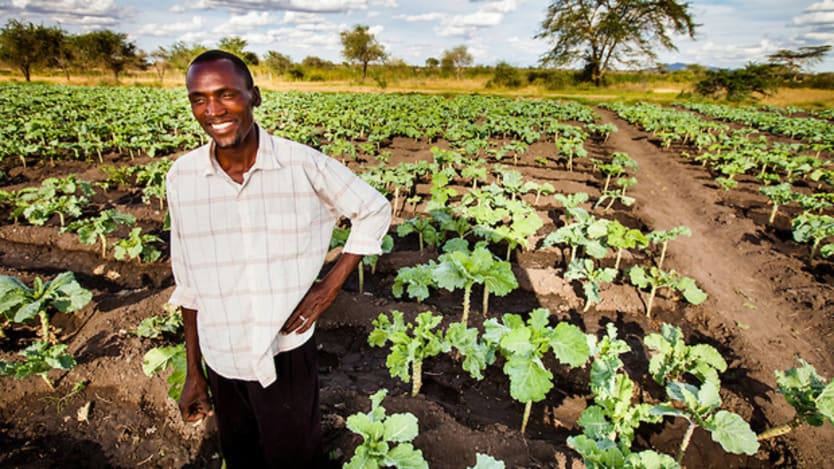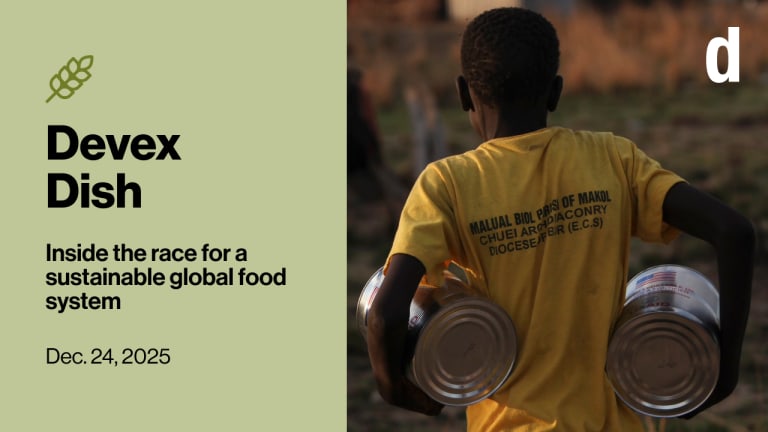
Ending extreme hunger and poverty within a generation is an ambitious but achievable goal.
Property systems that offer insufficient protection for small-scale farmers are just one of the major challenges we face to reach this goal. To have any hope of incentivizing behaviors — whether adopting good agricultural practices, new innovative agricultural technologies, or investments in improved inputs — we must have a legal and institutional framework that ensures farmers will have confidence in realizing a return on their investment.
A growing body of academic literature supports the notion that agricultural productivity increases often occur when land users perceive improvements to their property rights. Whether offered through a formal, state-managed tenure system or a customary system, farmers must be confident in their rights to access, use, and reap benefits from their land. When smallholder farmers believe that their rights will be recognized and enforced, they can and often do make important investments such as installing raised beds, investing in simple irrigation systems, or purchasing improved inputs. Property rights protections grant farmers the ability to begin thinking and operating their farms with a long-term, business-minded perspective, beyond todays’ land access, and beyond a single growing season. When farmers have little faith that their land rights will be honored, limited investment and short-term planning is logical behavior. Across much of sub-Saharan Africa, farmers face considerable limitations on obtaining clear property rights.
See more #FeedingDev articles:
● Food security is land security● Innovative ways to reduce risks in farming by advancing land ownership● How smallholder farmers can transition to medium-scale producers
Small farmers on formally titled land face notoriously complex administrative burdens and costs when securing their interests in rural land parcels. In Bangladesh, agricultural landowners in peri-rural locations reported that the cost of registering rural land required eight distinct administrative procedures over a 218-day period and at an astonishing cost equal to 228 percent of annual gross domestic product per capita. In Zambia, farmers must pay an average cost of 225 percent of annual GDP per capita to register their property interest for rural agricultural land, placing the benefits of rural land tenure protection out of reach for the average citizen. This data does not even take into consideration unofficial costs that farmers may face on top of formal expenses. Property protections available only to the richest citizens of a country are insufficient protections for an effective agricultural system.
Much has been written about the unpredictability inherent in the dynamic interplay between customary land tenure system and formal land tenure systems, and for good reason. In countries that have yet to fully recognize and offer equal weight to customary land claims, agricultural lands with no clear formal title are often listed as simply “government land” or “public land” with no recognition of claims by the users of land. For the majority of sub-Saharan farmers, rights to the land are established through a customary land tenure system, with lands often owned in common with members of a tribe or community, and with use rights distributed through a system presided over by a tribal chief or a set of community leaders.
This unpredictability has increased as agricultural land scarcity attracts greater numbers of investors seeking access to large tracts of agricultural land, generally within the customary land system. Non-recognition of customary claims has enabled instances of property transfers without just compensation for land rights or the value of crops on the land, and without even notice and an opportunity for dialogue. Some positive examples show a possible way forward: Mozambique and Papua New Guinea stand out as countries that have undertaken significant steps toward reconciling customary land tenure systems with the formal tenure system to lead to a modern, integrated tenure system. However, these still remain the exception rather than the rule. For many countries, the separation between formal and informal systems has resulted in stifling unpredictability for investors and rural communities alike.
To aid in this effort and to offer a vision for a way forward, in 2012 the U.N. Food and Agriculture Organization introduced the Voluntary Guidelines for the Responsible Governance of Tenure, providing policymakers and donors alike with guidance reflecting international best practices on the governance of tenure. Many of the guidelines laid out in this important document directly address sources of uncertainty in land tenure. Perhaps most importantly, corporations are starting to take notice. Both Coca-Cola and PespiCo have formally announced their support and have announced intentions to ensure compliance with the voluntary guidelines throughout their supply chains.
Join the conversation with our LinkedIn group!
Policymakers and local stakeholders must move forward with renewed efforts to address the systemic uncertainty facing producers and rural land tenure rights, particularly through more meaningful implementation of the voluntary guidelines. To set a proper trajectory for the elimination of extreme hunger by 2040, we must prioritize today policies and institutional reforms to help farmers see the benefits from their own investment into their lands. Land tenure reforms must be a top priority to ensure we will indeed feed our world’s future.
Want to learn more? Check out Feeding Development's campaign site and tweet us using #FeedingDev.
Feeding Development is an online conversation hosted by Devex in partnership with ACDI/VOCA, Chemonics, Fintrac, GAIN, Nestlé and Tetra Tech to reimagine solutions for a food-secure future from seed and soil to a healthy meal.






